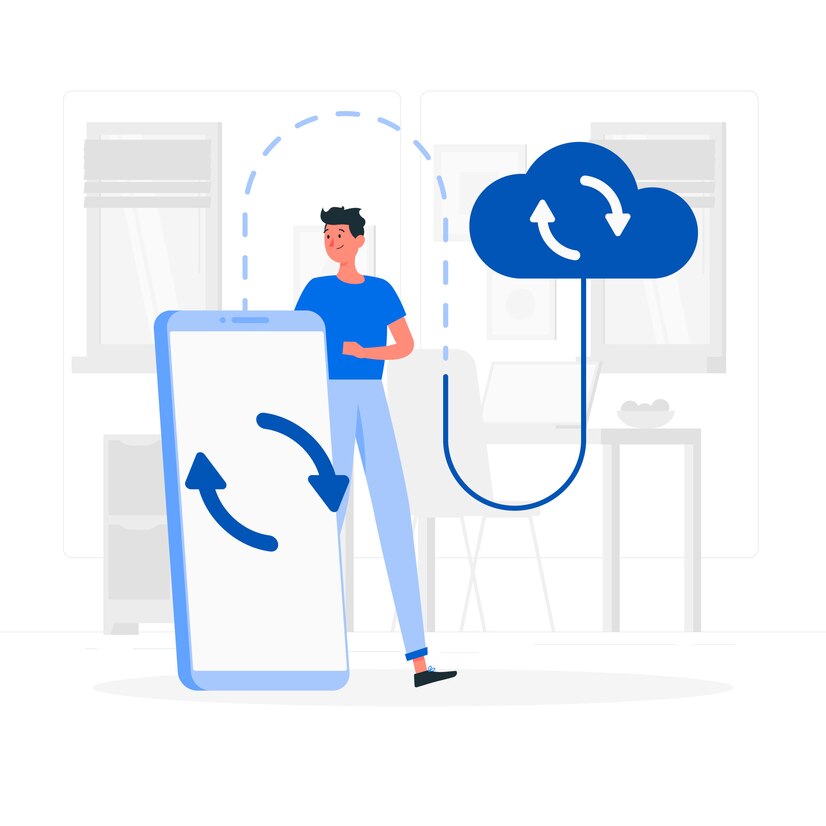CPA marketing is a smart way to earn where you get paid only when someone takes an action like signing up, downloading an app, or making a purchase.
It’s different from just showing ads. Here, real actions matter. That’s why both advertisers and affiliates love it it’s result-focused.🚀

It’s low-risk for brands and full of potential for affiliates especially if you’re new and want to make money online without selling anything directly.💡
And trust me, once you understand how it works, you’ll see why it’s one of the most powerful ways to earn online today.
What Is CPA in Digital Marketing?
In digital marketing, CPA stands for Cost Per Action or Cost Per Acquisition. It’s a pricing model where a business only pays when someone takes a specific action after clicking an ad.
That action could be making a purchase, signing up for a newsletter, downloading a file, or even filling out a form.
Unlike traditional ads where you pay for impressions (views) or clicks, CPA is all about real results.
The advertiser and the publisher (also known as the affiliate) agree on a set fee for each action, and the publisher is then responsible for driving those actions through their ad placements.
This model is great for businesses because they don’t waste money on ads that don’t perform.
They only pay when something meaningful happens. However, for the publisher, it can be a bit challenging since they carry more of the risk they only earn when they actually generate results.
CPA marketing is ideal for companies that want guaranteed outcomes from their ad spend. It’s often considered low-risk and high-reward for advertisers.

But here’s the catch: CPA campaigns only work well if your website is optimized to convert.
If the landing page is confusing or slow, potential customers might leave before completing the action.
That’s why your website content, speed, and overall user experience must be strong.
It’s also important to know that CPA is just one type of performance-based advertising. Other models include:
- CPC (Cost Per Click): You pay each time someone clicks your ad.
- CPM (Cost Per Mille): You pay per 1,000 views of your ad.
So, is CPA always the best option? Not necessarily. While it sounds like the safest choice, it only works well if your whole funnel from ad to action is smooth and convincing.
If you’re thinking of using CPA marketing, make sure your site is ready to handle and convert traffic. That’s the real key to success.
How CPA Marketing Works
Here’s how the system usually works:
- A business wants more customers or leads, so they create an offer.
- A CPA network connects the business with affiliates (people who promote the offer).
- The affiliate promotes the offer using a special tracking link.
- When someone clicks that link and completes the desired action (like a signup or purchase), the affiliate gets paid.

This setup benefits everyone:
- The advertiser pays only for results.
- The affiliate earns money by promoting offers.
- The CPA network helps both parties track and manage everything.
How Does CPA Marketing Work?
In simple terms, CPA marketing is a system where companies pay only when a specific action is completed like a signup, download, or purchase. Instead of paying for just clicks or views, they pay only when a result happens.
This system involves:
- A company (advertiser) that wants more leads or sales,
- A promoter (affiliate) who shares the offer,
- And a CPA network that connects the two and tracks performance.
The advertiser creates an offer, the affiliate promotes it using a unique link, and if someone takes the required action through that link, the affiliate earns a commission.
Let’s Break It Down with a Simple Example (Job Portal Niche)
Meet Ravi, who runs a blog that helps freshers and professionals find job opportunities and career tips.
There’s a platform called QuickHire, a job listing site that offers free resume templates, company insights, and application tracking tools.
They want more people to sign up for their job alerts.
QuickHire lists their offer on a CPA network: “We’ll pay ₹300 for every valid user registration.”
John joins the CPA network, grabs his special tracking link, and writes a blog post titled “Top 5 Sites to Get Job Alerts in India” adding QuickHire as his #1 pick.

Now, when someone clicks his link and signs up for free job alerts, Ravi earns ₹300.
Here’s the step-by-step process:
- QuickHire creates a CPA offer.
- Ravi picks the offer and promotes it using a unique link.
- A user signs up for job alerts via that link.
- The CPA network tracks the signup.
- QuickHire confirms the action.
- Ravi gets paid.
Benefits of CPA for Affiliates & Advertisers
CPA (Cost Per Action) marketing offers powerful advantages for both sides involved affiliates and advertisers.
For Affiliates
Affiliates earn money by getting users to take specific actions like signing up for a service, installing an app, or filling out a form. The best part? You don’t need to sell anything. Even a free sign-up can bring in commission.
- ✨ Low barrier to entry: Great for beginners
- ✔ Flexible niches: From gaming to health and finance
- ⚡ Performance-based: You get rewarded for results, not effort
Example: An affiliate promotes a free fitness app. Every time someone installs it through their referral link, they earn $1. No need to sell anything!
For Advertisers
Advertisers love CPA because they only pay when they get what they want leads, sign-ups, or purchases. There’s no paying for wasted clicks or impressions.
- 🚀 Lower risk: You only pay for conversions
- ⚠️ Better ROI: Every rupee spent goes toward a real outcome
- 📝 Easy to track: Measurable and scalable campaigns
Example: A fintech brand runs a CPA campaign offering Rs.200 per verified account signup. They don’t pay unless a user actually completes the onboarding process.
Types & Categories of CPA Offers
CPA offers vary depending on the kind of action required. Here are the most common types:
- Pay Per Sale (PPS): You earn a percentage when someone buys something.
- Pay Per Lead (PPL): You earn when a user signs up, submits a form, or requests a quote.
- Pay Per Install (PPI): You earn when someone installs an app or software.
Popular Niches/Verticals:
- E-commerce (product sales)
- Mobile apps (app installs)
- Sweepstakes (contest entries)
- Nutra (health & wellness)
- Crypto & Finance (wallet installs, KYC signups)
Example: A CPA offer pays you Rs.100 when someone installs a crypto wallet app and verifies their account.
How to Get Started with CPA Marketing (Quick Steps)
1. Join a CPA Network: Sign up with trusted platforms like CPAFlare, Mobidea, PropellerAds, or Adsterra.
2. Pick the Right Offers: Choose offers that match your audience or content niche (like gadgets, health tips, finance).

3. Promote Smartly: Use your blog, YouTube channel, Facebook Ads, or Telegram groups to share your unique CPA links.
4. Track Everything: Use tracking tools and analytics to see which sources and creatives are working.
Optimize: Tweak your strategy based on what performs best. Replace low-converting offers and scale the good ones.
Success Tips & Scaling Strategies

- Use the Right Traffic Sources: Pop-under ads, native ads, push notifications, and even email can work.
- Geo-target Your Campaigns: Some offers work better in specific countries.
- Test Creatives & Headlines: A small change in ad text or image can double your results.
- Use Smart Tracking: Always add tracking parameters to your links to measure success.
- Clone Winning Campaigns: Found a campaign that converts well? Replicate it across platforms or geos.
How to Measure CPA Performance
To keep improving, you need to measure the right things:
- CPA Formula: Total Spend ÷ Total Conversions = Cost Per Action
- ROI (Return on Investment): Compare earnings vs. spend
- EPC (Earnings Per Click): How much money you earn per link click
- CR (Conversion Rate): Percentage of people who complete the action
Example: You spent Rs.500 and got 25 leads. Your CPA is Rs.20. If you earned Rs.1000, your ROI is 100%.
Common Mistakes to Avoid
Going after highest payout only: High payouts usually mean harder conversions. Start with easy actions.
Ignoring tracking: Without tracking, you’ll never know what’s working.
Using bad landing pages: If the page looks suspicious or loads slow, users won’t convert.
Not testing: Always test different creatives, angles, and traffic sources.
Conclusion & Final Advice
CPA marketing is one of the most beginner-friendly and result-driven models in the online space. It’s perfect for both brands that want real results and for individuals who want to earn by promoting offers.
Start small. Pick one niche. Focus on one good CPA offer. Promote it honestly, track your progress, and keep improving. With patience and testing, CPA can turn into a reliable source of income or leads.
Ready to try it? Choose a trusted CPA network, grab your first offer, and start experimenting today!
FAQS
1. Is CPA marketing legal and safe to do?
Yes, CPA marketing is legal and widely used by legitimate brands. Just make sure to follow the rules of each network and avoid promoting misleading content.
2. Do I need a website to start CPA marketing?
No, you can promote CPA offers through social media, YouTube, or even paid ads though having a website helps build trust and track results better.
3. How much money can I make with CPA marketing?
Earnings vary based on the offer, traffic quality, and your promotion method. Some affiliates earn ₹500 a month, others make ₹50,000+ with the right setup.
4. What’s the best traffic source for CPA marketing?
It depends on your niche. Beginners often start with social media or blogs, while experienced marketers use paid ads like push notifications, native, or pop-unders.
5. Can beginners succeed in CPA marketing?
Yes, CPA marketing is beginner-friendly. Start with easy-to-convert offers, focus on learning one traffic source, and test consistently.
6. What tools help with CPA tracking and performance?
Tools like Bemob, Voluum, and RedTrack help track clicks, conversions, and optimize campaigns. Many CPA networks also offer built-in tracking dashboards.